Positive Health Online
Your Country

Yoga for Health, Consciousness and Balance
listed in yoga, originally published in issue 190 - January 2012
What is Yoga? Is it simply a practice of certain exercises that involve stretching, bending and balancing? Not really, although these exercises (called asanas in Sanskrit) play a major role in the way Yoga is enjoyed by millions today. Yoga is a Sanskrit term meaning "to yoke or bind" and implies the union or communion of body, mind and soul. Yoga sadhana (or practice) can also include breathing exercises, meditation, chanting, prayer and service to humanity. Yoga is a pragmatic science and philosophy devoted to the realization of the true Self and thereby the exalted state of unalloyed bliss and inner peace. This subject has been explored by certain civilizations for centuries. Recently excavated stone figurines of yoga meditation postures found during an archaeological dig in the Indus Valley tell us that the practice of Yoga has been with us for almost 5,000 years. Scriptural evidence dates back to circa 1500 BC. But it wasn't until about 250 BC that we find the first scientific treatise on the subject, the Yoga Sutras, believed to have been written by a sage named Patanjali
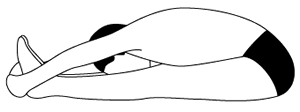
Paschimottanasana
These Yoga Sutras break down the subject of Yoga into eight component parts or limbs: Yamas (societal behavioral rules), Niyamas (personal behavioral rules), Asana (yoga postures), Pranayama (breath control), Pratyahara (sensory withdrawal), Dharana (concentration), Dyhana (meditation) and Samadhi (self realization). Like limbs of a tree, each of these parts contains the whole, and supplements and complements the others. For example, we are told by Patanjali that the practice of pranayama is dependent on the ability to perform asana well so that the breath can remain steady and full. We also know that the performance of asanas in turn requires an unimpeded steady flow of breath. Likewise, the behavioural precepts of the yamas and niyamas serve to foster a quiet mind so that other yoga practices can take root, yet the inner strength derived from asana provides the ability to adhere to these precepts. One could go on. In order to meditate, posture is needed, yet the mastery of posture ends in meditation. We begin to see how these yogic limbs are interdependent and cannot be separated from the whole.
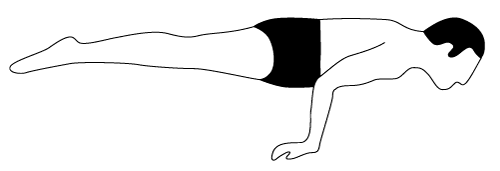
Mayurasana
Although Patanjali says very little about yoga and health, later texts like the Hatha Yoga Pradapika written by sage Swatmarama during the 14th century AD clearly state the curative value of certain asanas. For example, regarding the seated forward bend known as Paschimottanasana, Swatmarama states, "it kindles the gastric fire, reduces obesity and cures all diseases." He adds that Mayurasana, a prone position where one balances on the hands with the elbows pressing into the abdomen, "... soon destroys all diseases and removes abdominal disorders, and also those arising from irregularities of phlegm, bile and wind, digests unwholesome food taken in excess, increases appetite and destroys the most deadly poison." The Siva Samhita written around the 17th century AD promises that the repeated practice of a certain pranayama will bring a supple body, bright complexion and strong good working limbs.
The idea that particular yoga practices can be prescribed as a cure for particular diseases or conditions is becoming increasingly interesting to the yoga public. This is especially true considering the cost of main stream medical care today. Accordingly, a modern day science is developing within the overall science of Yoga that is devoted specifically to the therapeutic value of asana and pranayama
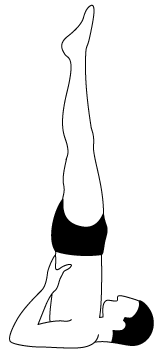
Shoulder Balance

Sirsasana – head balance
For example it is now a well known fact that doing inverted postures such as Sirsasana (head balance) and Sarvangasana (shoulder balance) can ward off cold and flu and regulate thyroid function. Through regular practice of these asanas one can cure constipation, build up haemoglobin and gain stamina. Standing asanas like Triangle Pose and Side Angle Pose are wonderful for the relief of many back problems. Gomukhasana (cow faced posture) can help with hip and shoulder problems. Cobblers Pose a.k.a. Baddha Konasana is known to prevent prostate pathology. Certain pranayamas can purify the nervous system and help keep the lungs and heart healthy.
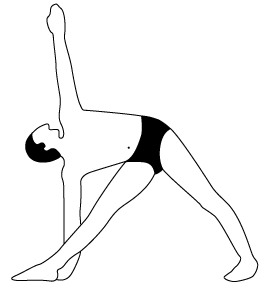
Triangle
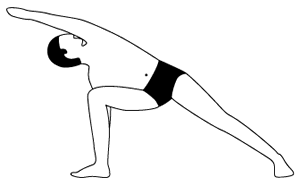
Side Angle
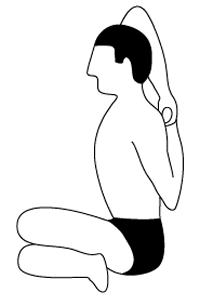
Gomukhasana (Cow Faced Posture)
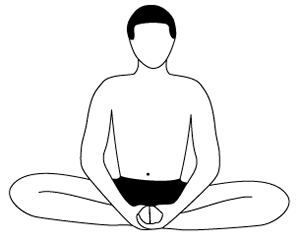
Cobblers Pose a.k.a. Baddha Konasana
There is an inherent problem here though. Some are beginning to come to yoga classes simply to heal certain ailments and are looking for specific practices to do just that. When they do this however, they are trying to separate the part from the whole which is ant thematic to yoga as a holistic science. "Never let the fruits of action be your motive," states the Bhagavad-Gita, another important authority on the subject of Yoga. One should practiSe for the sake of practice, not for cause and effect. Aches and pains will go away when the tension resulting from disharmony within is alleviated. This inner discord is most likely multi faceted and can not and should not be approached directly. A comprehensive yoga sadhana is needed. In his seminal work, Light on Yoga, BKS Iyengar defines health as ..." the complete equilibrium of body, mind and spirit."
Can body, mind and spirit be considered separately? Or, like the Yoga Sutras are they interdependent aspects of one whole? We know that when the body is ill the mind is dull, and when the mind is troubled the body suffers. But what is the relationship of mind and spirit? This question is answered in the Kena Upanishad written about 400 BC. "What cannot be thought with the mind, but that whereby the mind can think. Know that alone to be Brahman, the Spirit..."
Patanjali called this spirit pure consciousness or Purusa a.k.a. the seer. This pure consciousness can be realized but not known because it is "that whereby the mind can think". It is realized only through citta vrtti nirodah or the "quieting of the whirling of the mind" which is accomplished by practiSing the eight limbs of Yoga. Some yogis refer to this Purusa as the Self as in "Self Realization".
Other than Purusa, everything else that exists is considered Prakriti or nature. Even thought falls into this category according to Patanjali. Other ancient yogic texts refer to Prakriti as "World Phenomenon" which is illusionary or maya. World Phenomenon is perpetuated by incomplete, unconscious actions involving thought, word or deed that leave a residue on the mind known as samskara or seeds of conditioning. The past is always there in this residue, clouding perception with uncontrolled automatic reactions that conceal the truth. Here there is no freedom because one is bound by cause and effect and made a victim of karma.
When the seer or true Self is realized, there is no separation between the doer, the doing and that which is being done. All is One according to the Siva Samhita. There is only knowing, existence and bliss. Attaining this state of consciousness is obviously quite difficult however because so few have succeeded.
Balance has always been synonymous with the term Yoga. Probably because every aspect of the science, philosophy and practice of yoga incorporates balance in one way or another. The Bhagavad-Gita states, "For the man who is moderate in food and pleasure, moderate in action, moderate in sleep and waking, Yoga destroys all sorrow."
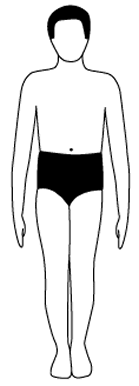
Tadasana or Mountain Pose
We find balance in asana. Samasthiti is another name for the fundamental asana commonly known as Tadasana or mountain pose. The prefix sama is a Sanskrit term meaning even, same, equal. Samasthiti therefore implies standing erect with a balanced steadiness. When we sit for meditation we join our hands in front of the heart as a gesture of balancing our right and left sides. When our incoming and out going breath are of the same duration we have what is known as samavrtti or balanced breathing.
So balance is Yoga and Yoga is balance. This is also evident in the symmetry of every yoga asana in its shape and in its performance .If one does a pose on the right side; it is done on the left for equal time. This is quite unlike other activities where there is an asymmetry in performance such as racket sports and bowling where the dominant side gets all the work. The science of Yoga presupposes that an asymmetry in the body brings an asymmetry to the mind which is the root cause of comparison and judgment. When one balances on one's head in the practice of asana, the mind eventually finds balance as well. As this balance deepens, a steadiness comes to the mind which allows one to see all aspects of life evenly - another definition of Yoga found in the Bhagavad-Gita.
Yoga is a practice, a science and a philosophy that has been with us for a very long time and will probably be with us for many years to come if we continue to maintain its authentic integrity. This subject is devoted to the evolution of humankind to its highest potential. Yoga knowledge must be preserved and its practice continued in its truest form.
It is not a cause and effect phenomenon but a cultivation of right action whereby one is not attached to results and thereby attains liberation.
Comments:
-
Dees Sypal said..
Profound yet simple.
Well written. Well lived.
-
Gina V said..
Thank you Jeff for providing such a compact yet potent summary of why and how to live yoga. As always your insights, experience, knowledge and example light a path for all of us to walk upon. Namaste.